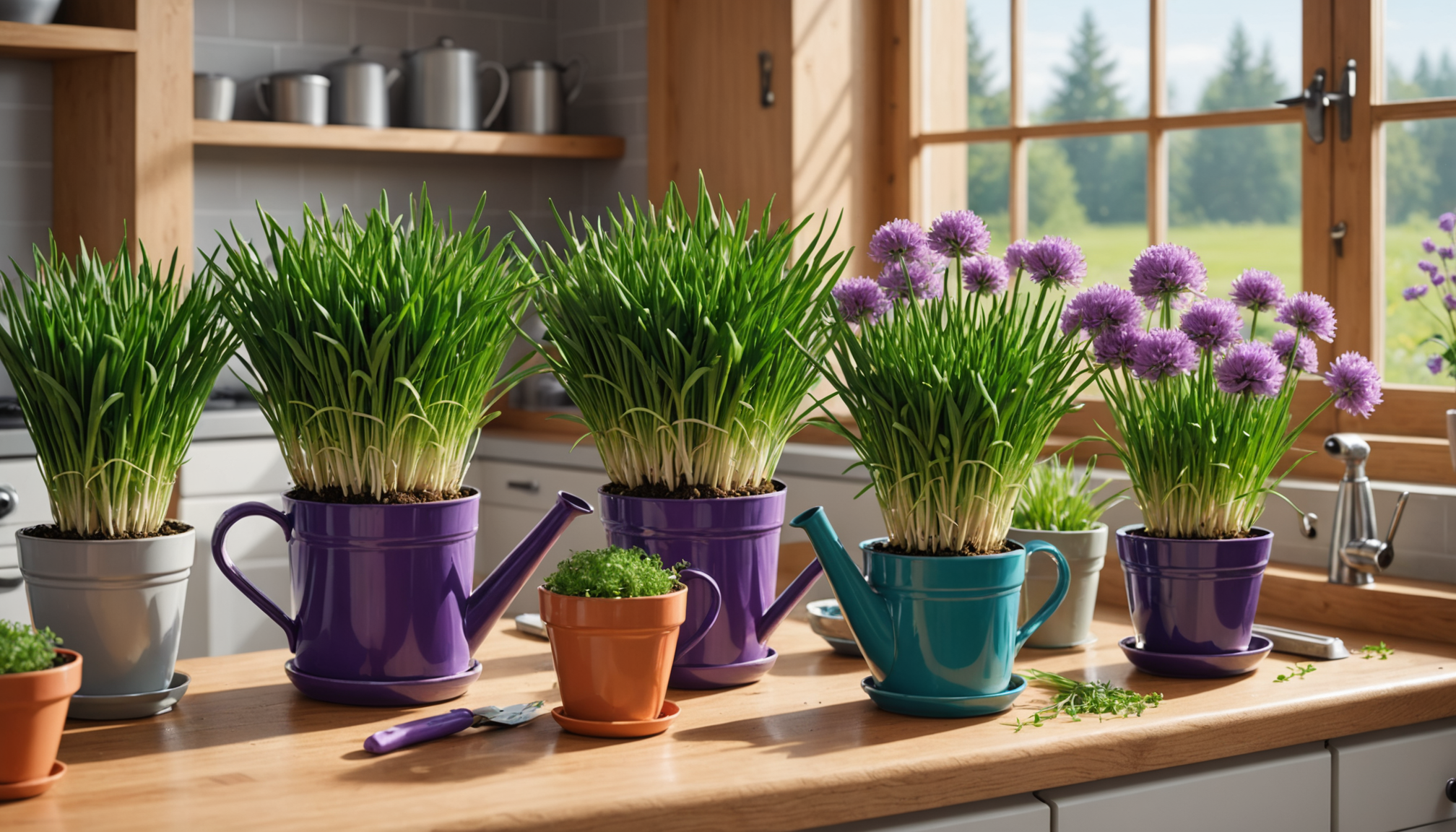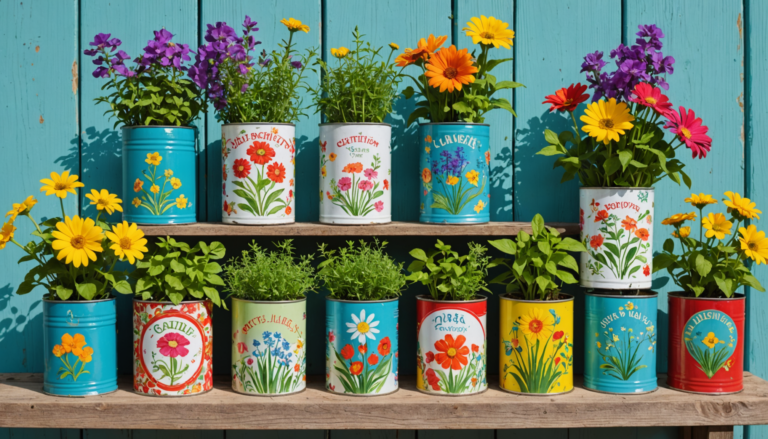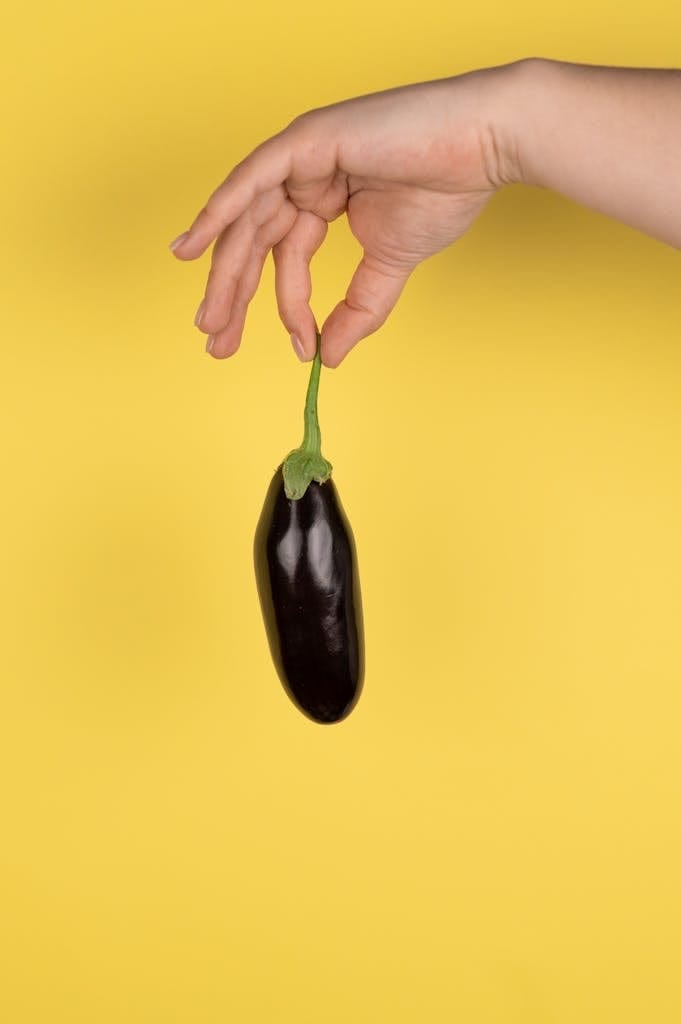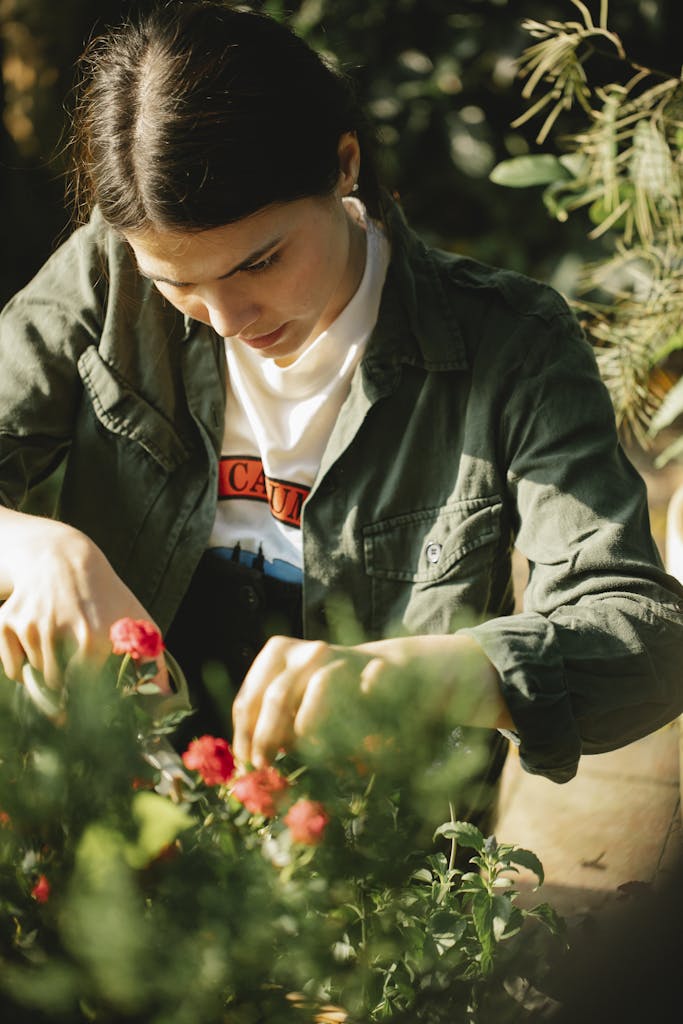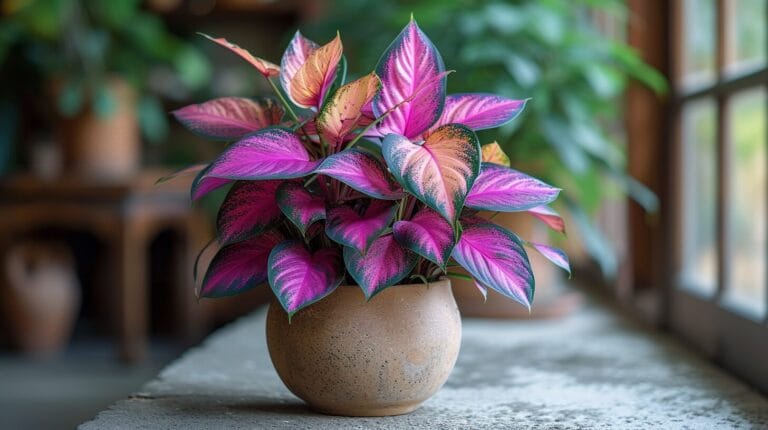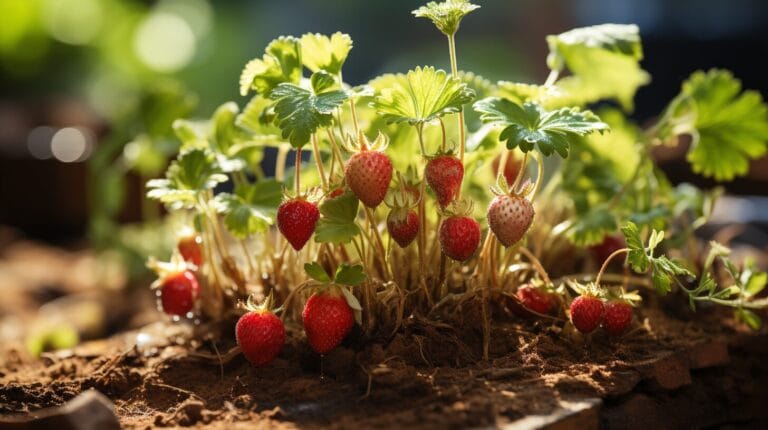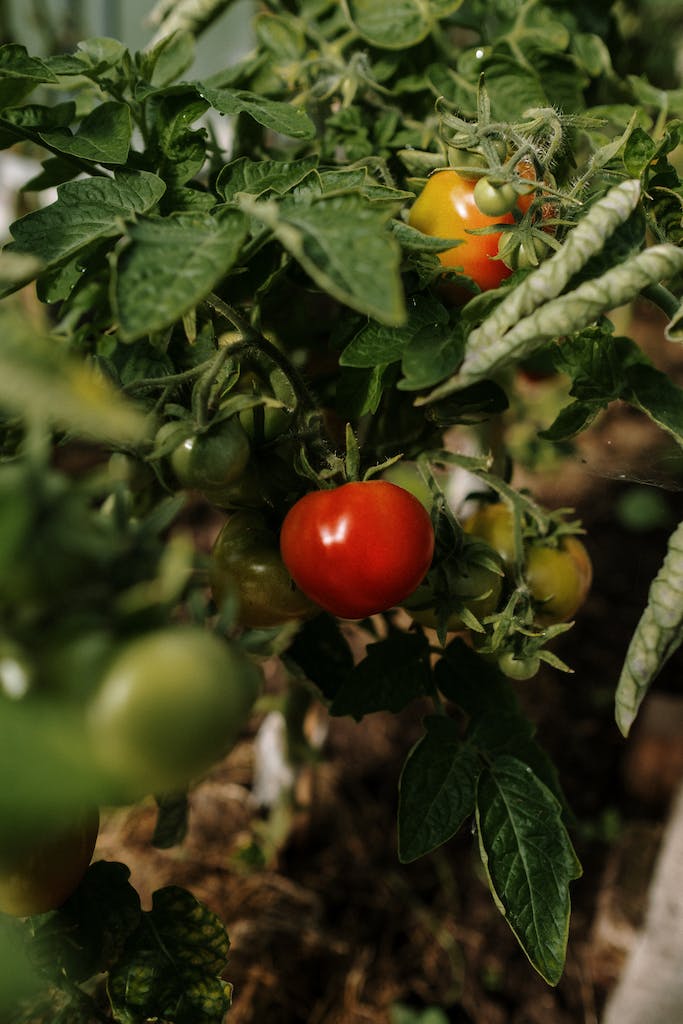Chives are a delightful herb that can bring fresh flavor to your meals throughout the year. Learning how to plant chives indoors can be a rewarding journey for any home gardener. This guide will walk you through the essential steps for successfully growing chives inside your home and provide insights on how to plant chives indoors effectively.
Understanding the Right Conditions to Grow Chives Indoors
How to Plant Chives Indoors: A Step-by-Step Guide
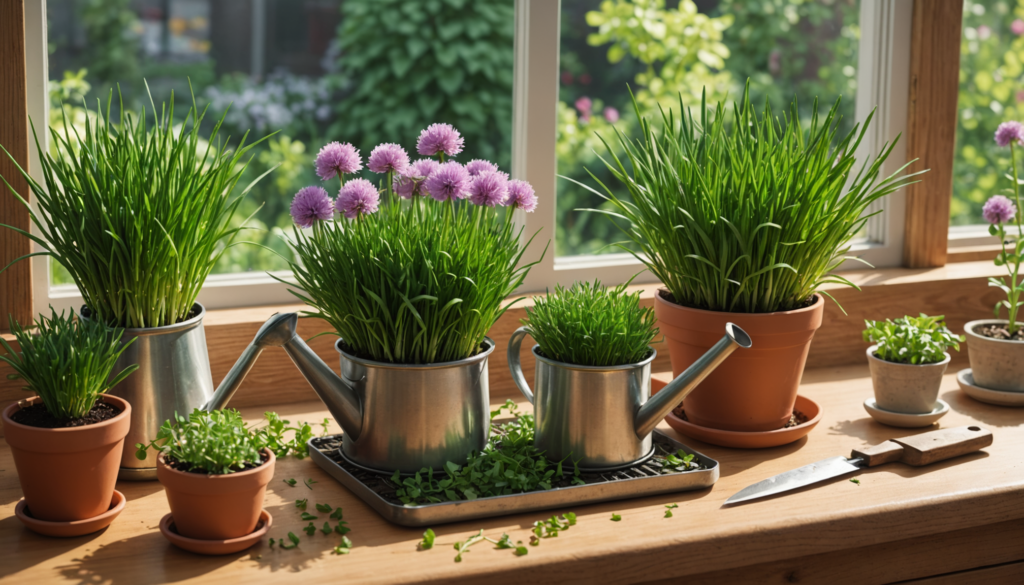
Chives flourish in well-drained soil and need approximately 6 hours of sunlight daily, with an ideal temperature range of 60°F to 75°F (15°C to 24°C) for optimal growth. To support their development, maintaining moderate humidity is beneficial, so misting may be necessary in dry conditions. These herbs require bright light, making a south-facing window an excellent location; if natural light is lacking, grow lights can be used to provide sufficient illumination. Additionally, it’s important to use a light, well-draining potting mix, as heavy garden soil can cause poor drainage and increase the risk of root rot. (Wikipedia, UMN)
Choosing the Best Variety of Chive for Indoor Planting
Two popular varieties of chives are well-suited for indoor gardening:
- Common Chives (Allium schoenoprasum): This variety has a mild onion flavor and is ideal for various dishes. (NSCU)
- Garlic Chives (Allium tuberosum): Known for their stronger garlic flavor, they can add a unique twist to recipes. (Wikipedia)
Both types can flourish indoors with the right care and conditions.
Essential Tools and Supplies Needed to Plant Chives
Gather the following supplies before starting your indoor chive garden:
- Containers: Choose pots with drainage holes, at least 6-8 inches deep, to prevent waterlogging.
- Potting Soil: Opt for a quality potting mix that retains moisture but allows excess water to drain.
- Watering Can or Spray Bottle: These tools will help you control the moisture levels in the soil.
- Fertilizer: Use a balanced, water-soluble fertilizer designed for herbs, applied every few weeks during the growing season.
Step-by-Step Guide to Plant Chives Inside
- Select a Container: Choose a pot that is at least 6-8 inches deep.
- Prepare the Soil: Fill the container with potting mix, leaving an inch of space at the top.
- Plant the Seeds or Seedlings: Place seeds about ¼ inch deep or transplant seedlings gently into the soil.
- Water the Seeds: Moisten the soil lightly without making it soggy.
- Find a Bright Spot: Place the container in a sunny location or under grow lights.
- Monitor Growth: Keep the soil damp but not too wet; you should see sprouts in about 7 to 14 days.
Caring for Your Chive Plants: Indoor Garden Maintenance
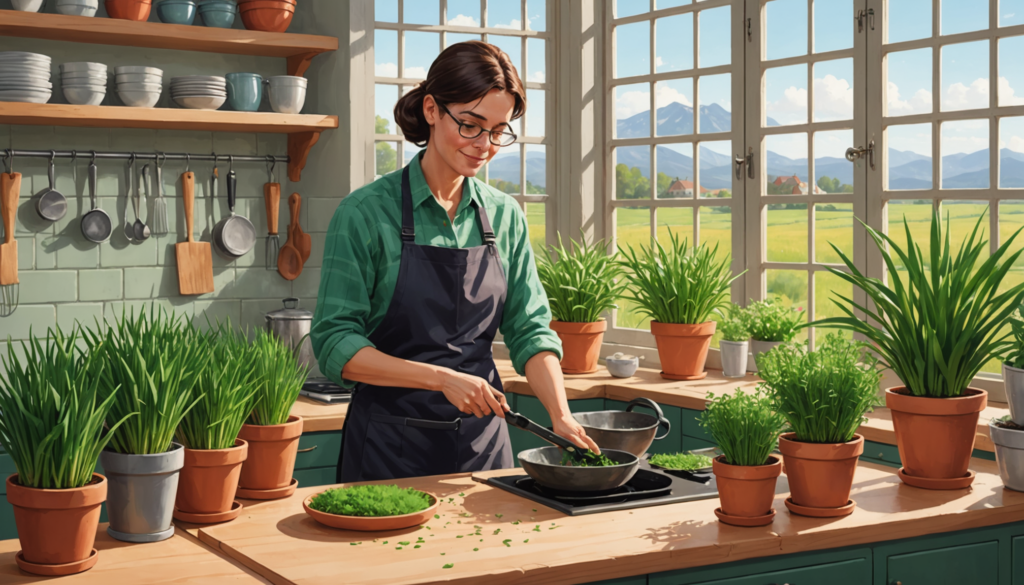
The Right Watering Schedule for Growing Chives Indoors
Water chives when the top inch of soil feels dry. This typically means watering once a week, but adjust based on your indoor climate conditions. During hot weather, you may need to increase the amount of water. Monitor the water quality and ensure it is suitable for plants. Using a garden hose or water containers can help you manage this process more effectively. Remember that the absorption of water is crucial for the active growth of your chives.
Optimal Light Conditions for Healthy Chive Growth
Chives need plenty of light—ideally 12-16 hours per day. Use grow lights if natural light is limited, especially during winter (Gregg). Light energy is essential for photosynthesis, which facilitates the conversion of carbon dioxide into oxygen. If you notice stunted growth, check whether your chives are receiving adequate light and adjust accordingly. The balance between transpiration and light exposure will contribute significantly to the health of your indoor plants.
Fertilizing Your Indoor Chive Plants: Tips for Success
Apply a balanced, water-soluble fertilizer every 4-6 weeks during the growing season to provide essential nutrients. This helps maintain the vitality of your chive plants and supports their growth. Look for fertilizers containing vital nutrients and trace elements that can enhance the overall health of your plants. Incorporating compostable material into your soil can also improve nutrient transport and enhance the structure of your growing medium, leading to better absorption of water and nutrients.
Benefits of Growing Chives Indoors: Why It’s a Great Addition to Your Home Garden
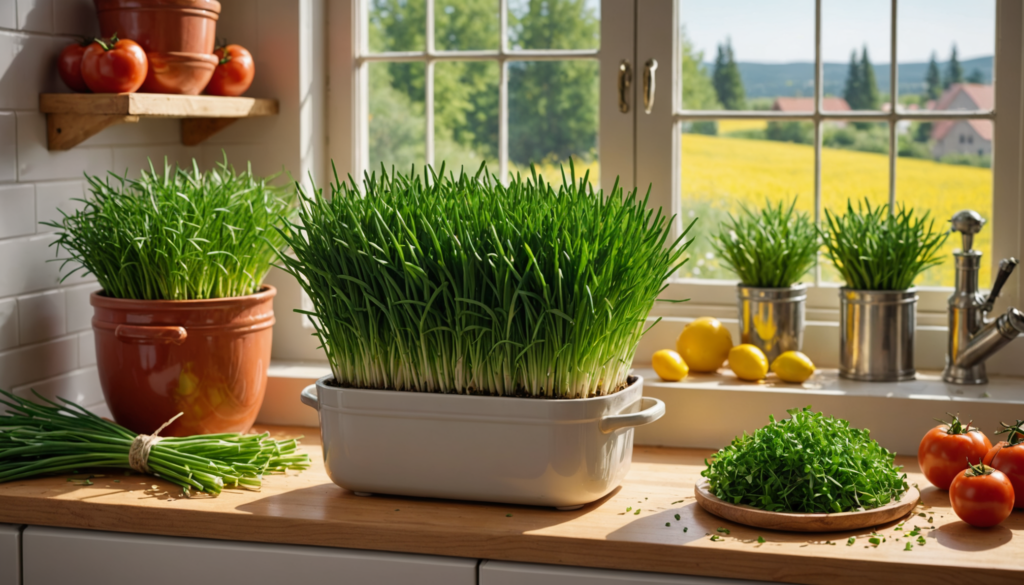
Chives are low in calories yet rich in vitamins A and C, providing health benefits while enhancing your meals’ flavors. These easy-to-grow plants require minimal maintenance and can thrive in small spaces, making them a perfect addition to your indoor garden.
Nutritional Benefits of Chives
Chives are low in calories yet rich in vitamins A and C, providing health benefits while enhancing your meals’ flavors. This makes them an excellent choice for those looking to boost their nutrient intake without adding excessive calories.
Culinary Uses
Chives can be used fresh in salads, soups, or as a garnish. Their mild onion flavor complements many dishes without overpowering them, allowing you to enjoy the taste while keeping the meal light and free from strong seasonings.
Enhancing Your Indoor Aesthetics with Chive Plants
Chives add lively greenery and can produce attractive purple flowers, enhancing the visual appeal of indoor spaces. Their pretty appearance can transform even the simplest areas of your home into inviting environments, making them a worthwhile addition to any indoor garden.
Common Mistakes to Avoid When Planting Chives Inside
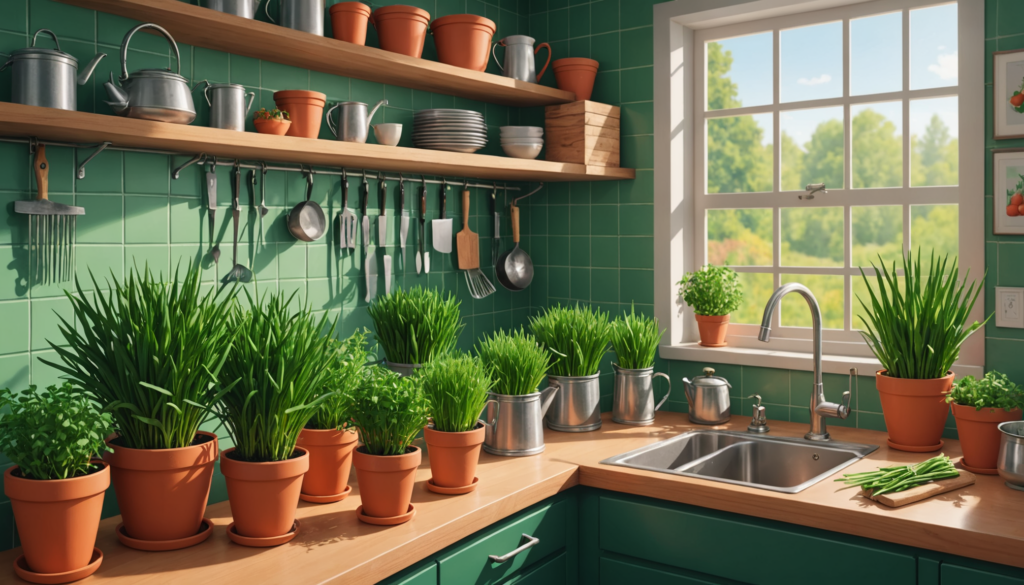
Why Overwatering Can Kill Your Indoor Chive Plants
Overwatering can cause root rot, significantly harming your chive plants. To keep them healthy, ensure proper drainage and let the top inch of soil dry between waterings. If you want your chives to thrive, a quick check on soil moisture can be very helpful.
Ignoring Light Requirements
Chives need adequate light to grow well; otherwise, they may become weak and leggy. To keep them strong, make sure they get enough sunlight or use grow lights when necessary. A fine option is to place them in a tray near a sunny window.
Choosing the Wrong Soil Type
Using heavy soil can hinder growth, so it’s essential to choose a light, well-draining potting mix. This will support healthy root development and help your chives germinate quickly. Remember, a big part of successful indoor gardening is selecting the right materials to create a thriving environment for your edible plants.
Expert Recommendations for Growing Chives Indoors Successfully
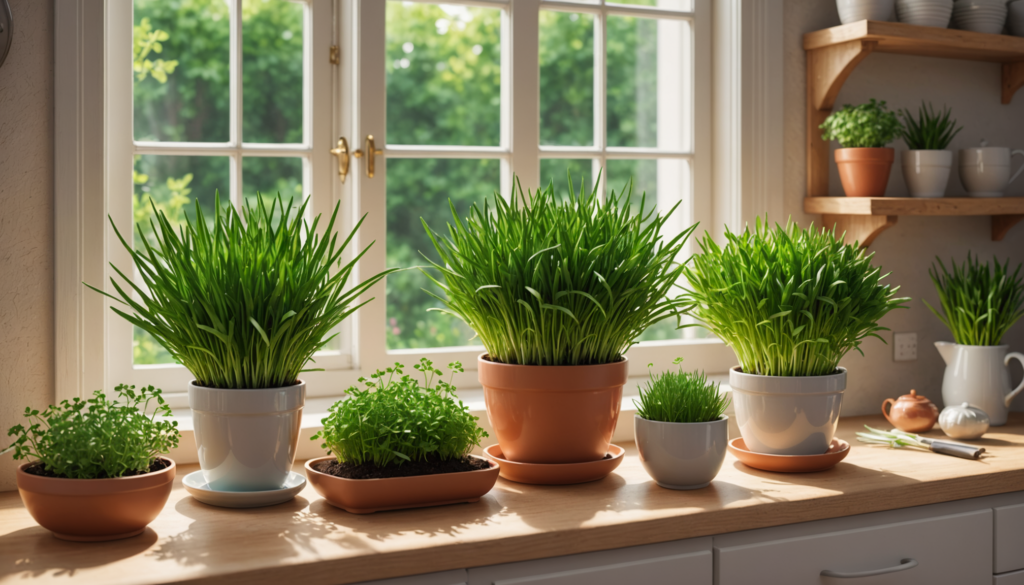
How to Extend the Harvesting Period of Your Indoor Chives
Regularly trim chive leaves about one inch above the base to encourage new growth and maintain a steady supply. Additionally, ensure you provide appropriate plant food to support healthy growth and maximize the potential of your chives throughout the harvesting period.
Best Practices for Indoor Chive Plant Care
Rotate pots every few weeks to ensure even light exposure and monitor for pests regularly to prevent infestations. Maintaining a consistent balance of water is crucial, as the absence of transpiration can lead to water stress in your plants.
Personalized Tips for Different Indoor Growing Environments
Adjust your care routine based on indoor conditions like humidity and temperature. For instance, increase watering in low-humidity environments, and consider using soft water to help maintain optimal alkalinity of the soil for your chives.
Conclusion
Growing chives indoors can be both rewarding and beneficial for your kitchen. By following this guide, you can create a thriving indoor chive garden that enhances your meals with fresh flavor and adds beauty to your home.
FAQ
1. How often should I water my indoor chives?
Water when the top inch of soil feels dry, usually once a week.
2. What type of light do chives need?
Chives require at least 12-16 hours of light daily.
3. Can I grow chives from seeds indoors?
Yes, sow seeds about ¼ inch deep in well-draining potting soil.
4. What pests should I watch for when growing chives?
Common pests include aphids and spider mites; regular inspection helps manage them.
5. How can I extend the harvesting period of my indoor chives?
Regularly trim chives to encourage new growth and maintain a continuous supply.

